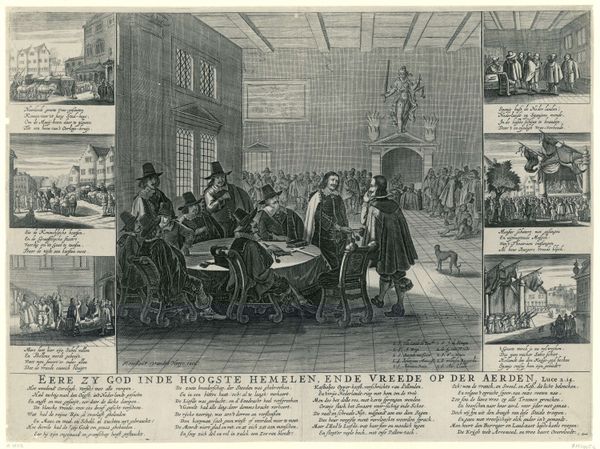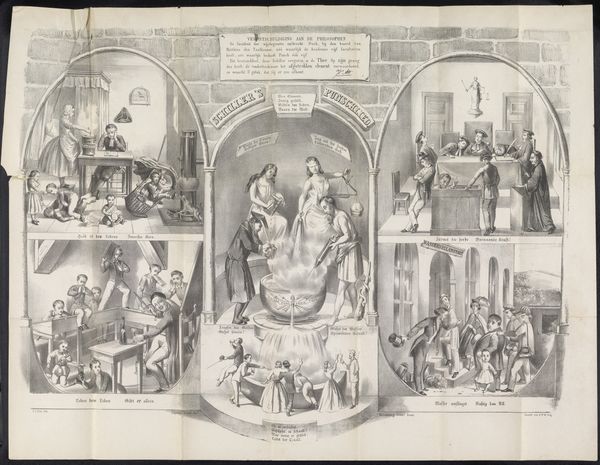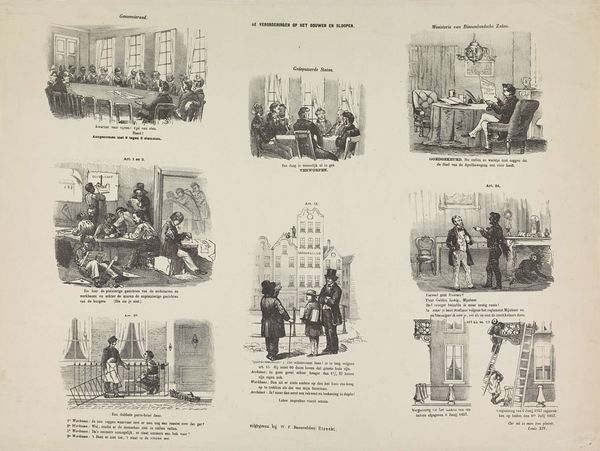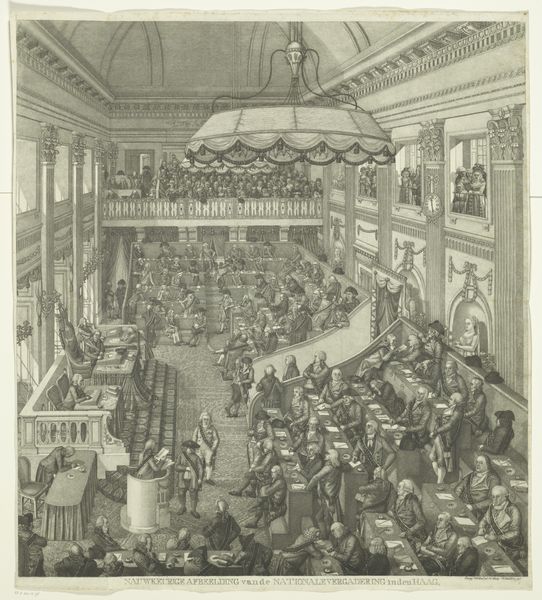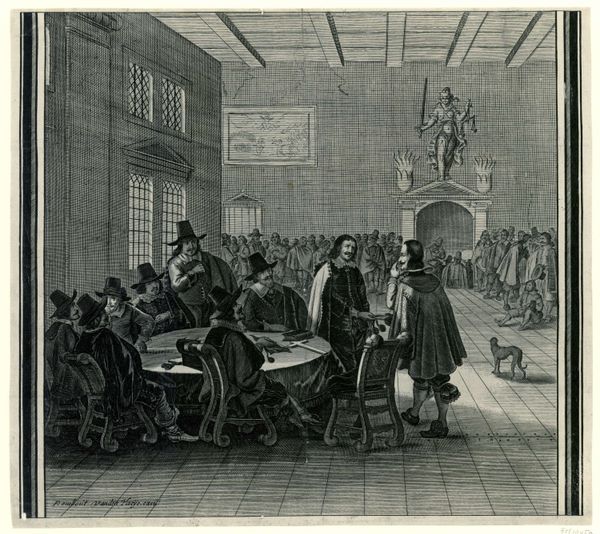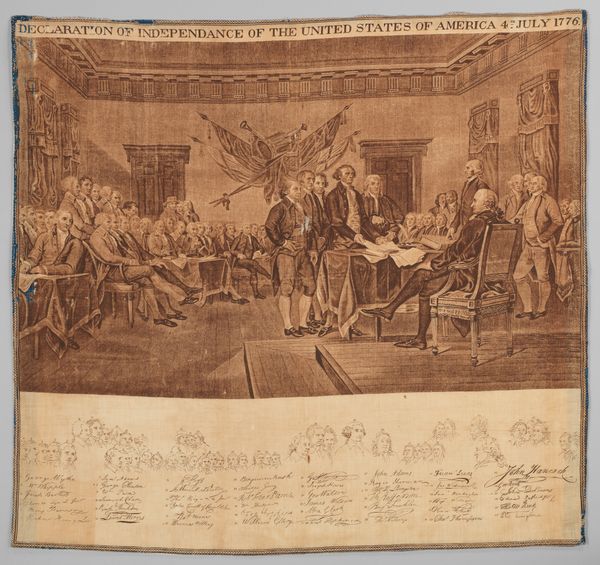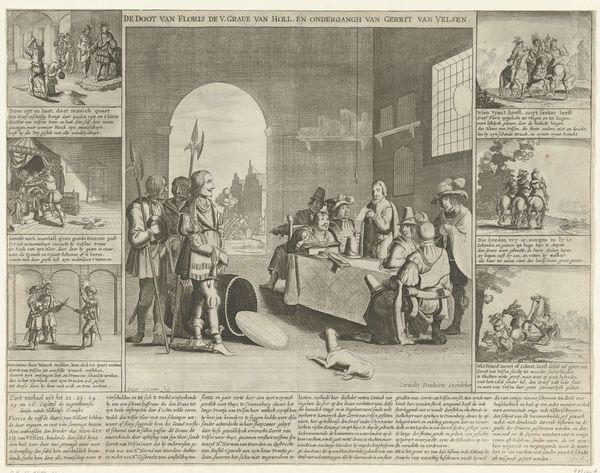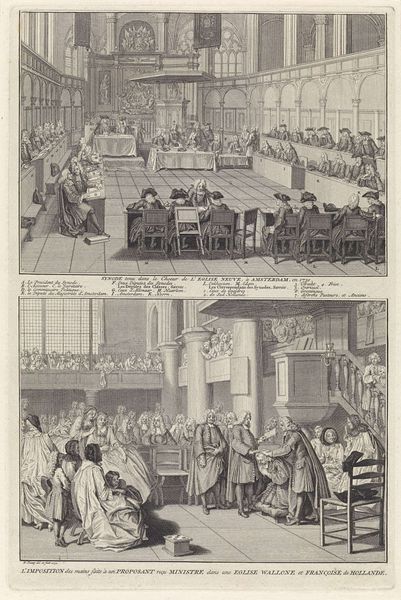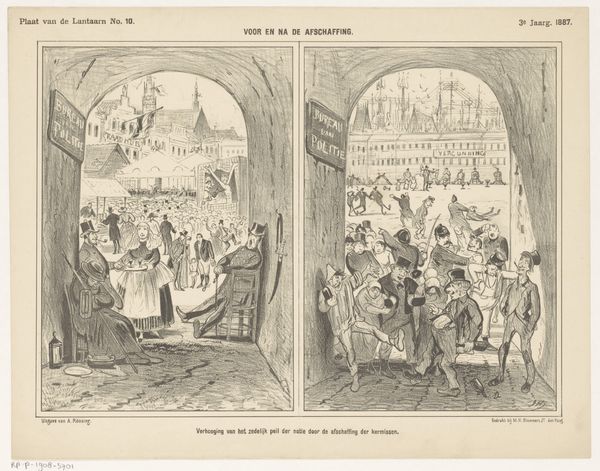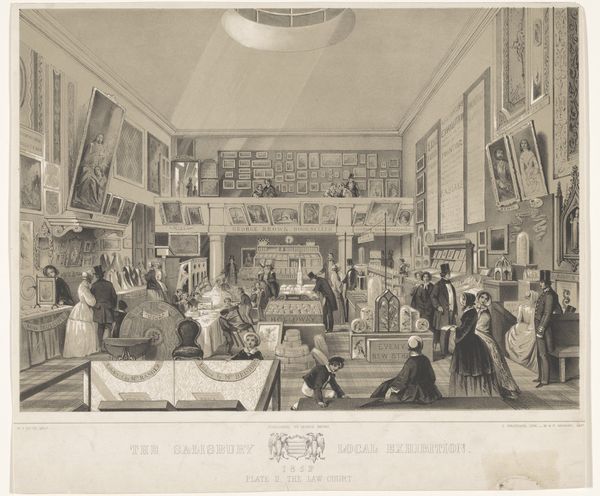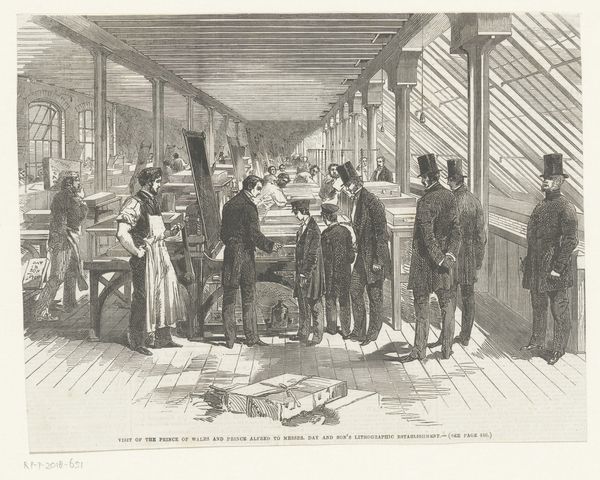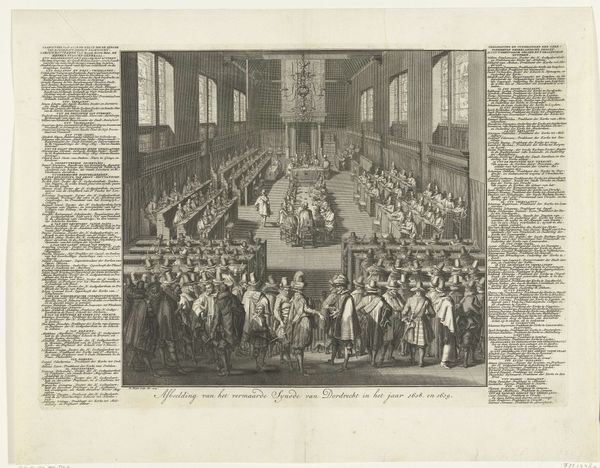
print, engraving
#
narrative-art
#
baroque
#
dutch-golden-age
# print
#
genre-painting
#
history-painting
#
engraving
Dimensions: height 424 mm, width 574 mm
Copyright: Rijks Museum: Open Domain
Editor: This engraving from 1648, titled *The Handing over of the Ratification of the Peace of Munster*, depicts a historical moment, and although made in monochrome, the varying textures still makes this a busy image! What stands out to you when you look at this? Curator: Well, immediately, my eye goes to the labour embedded within this print. The very process of engraving, the meticulous work required to translate such a complex scene onto a copper plate, speaks volumes about the investment in portraying this specific historical moment. Editor: So, you see the labor first rather than, say, the political import? Curator: Precisely. Consider the economics of printmaking at this time. Who was commissioning this work? Who would have purchased it? And how does the mass production of this image via printing contribute to the construction of national identity and the commodification of peace? Editor: That's interesting. I guess I hadn't really thought about who owned the tools for such large-scale projects, how it affected artistic expression. Curator: Exactly. Look at the surrounding vignettes alongside the central scene. Are they meant for just aesthetics? Instead, let's analyze the paper, the ink, the dissemination of the image – it reveals a network of economic and social relations shaping how peace itself was perceived and consumed by the masses. Do you see how the object becomes more than just an image? Editor: I see your point. So much meaning is packed into this work by focusing on materials, tools, dissemination. I'll certainly consider the production of the work next time. Curator: Yes. It is through its tangible existence that we are connected to social context, labor, and economy of the era, rather than seeing art as just unique aesthetic or historical documents.
Comments
No comments
Be the first to comment and join the conversation on the ultimate creative platform.
